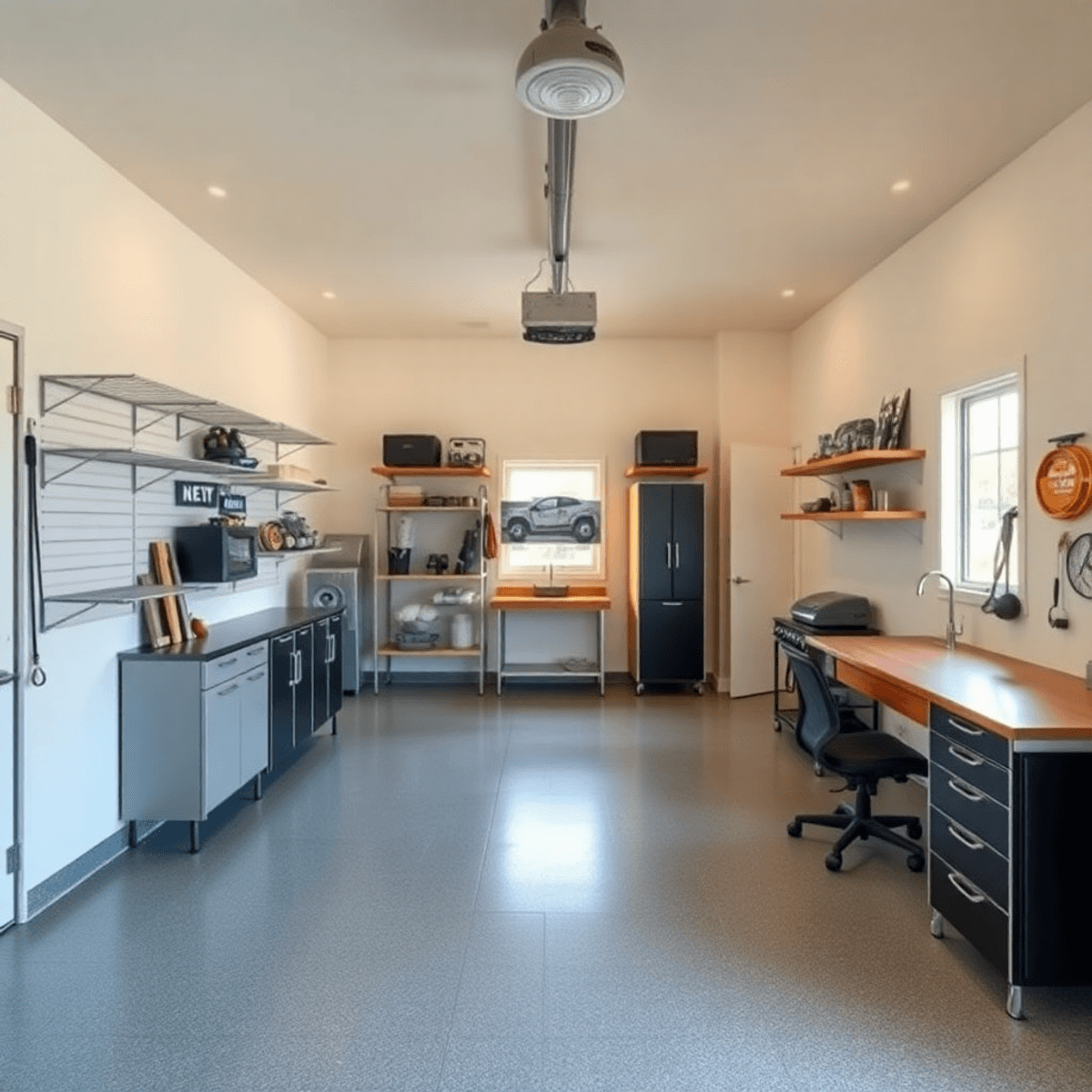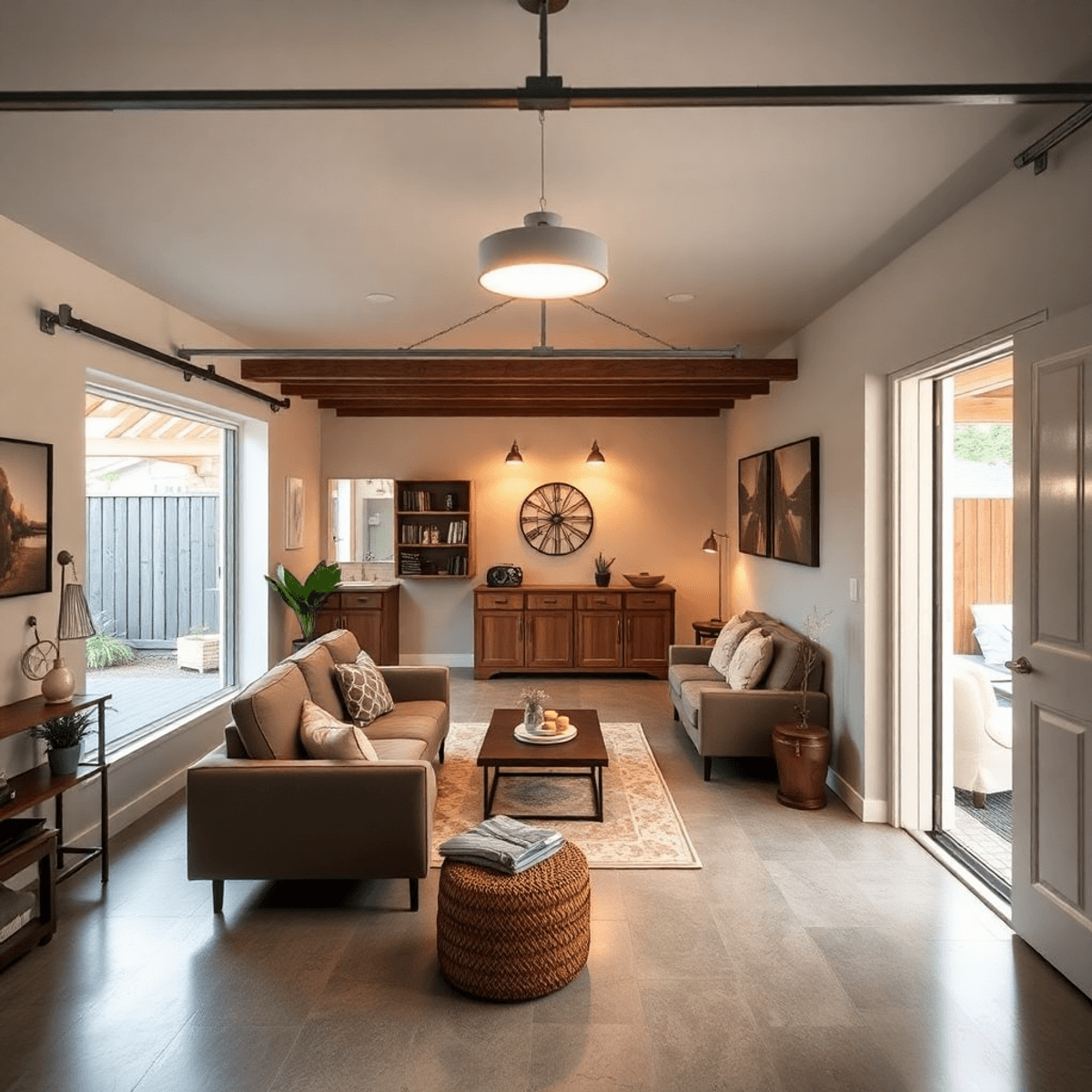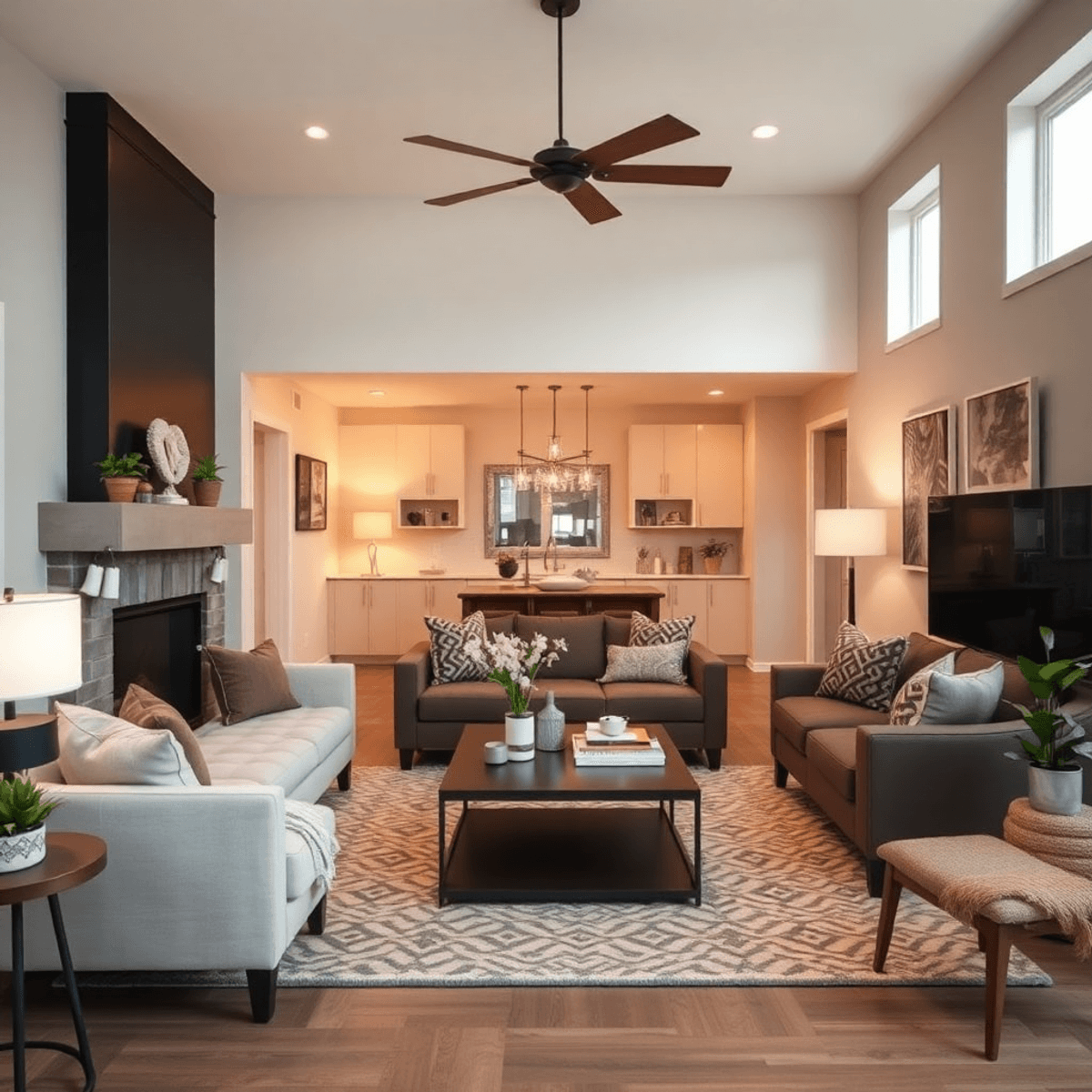Introduction
Remodeling your home in Lindenhurst, Gurnee, and Grayslake can be both exciting and challenging. Whether you want to upgrade your kitchen, renovate your bathroom, or finish your basement, it’s important to understand the local renovation scene. Each town has its own architectural styles and community aesthetics, so you’ll need to customize your plans accordingly.
For example, if you prefer a gothic-inspired design, you can incorporate elements of the Vampire Aesthetic into your home. This modern take on the dark aesthetic adds a unique touch to your renovation project.
On the other hand, if you’re seeking a cozy and nostalgic atmosphere, consider adopting the Strega Nona Aesthetic, which embodies a simple and idyllic lifestyle. This could be especially appealing when remodeling your living space for a more inviting ambiance.
Budgeting is crucial for a successful home remodel. It helps you avoid overspending and keeps the project within your financial means. Without a proper budget plan, homeowners may encounter issues like unexpected costs or incomplete projects due to lack of funds.
Not having a structured budget can also lead to longer timelines and stress from financial strain. By prioritizing budgeting from the beginning, you can control costs and create a smoother renovation experience.
Additionally, incorporating specific aesthetics into your home may require extra investment. For instance, if you’re interested in embracing the Cinnamon Girl Aesthetic this winter or trying out easy dessert recipes like dump cakes, make sure to include these expenses in your overall budget.
The following sections provide a comprehensive guide on how to budget effectively for your home remodel in these vibrant communities. This will help you achieve your desired improvements without compromising quality or exceeding your financial limits.
1. Define Your Scope and Priorities
Understanding the scope of remodel is crucial to maintaining control over both costs and timelines. Without a clearly defined scope, you risk overspending and encountering project delays. Identifying which areas of your home need attention helps in creating an effective plan.
Focus Areas
Consider which parts of your home require remodeling. Kitchens, bathrooms, and basements often top the list due to their high usage and potential for increased home value. For example, if you’re considering a rustic Amazon tiny house layout, you might want to focus on optimizing those spaces. Your choice should reflect personal needs and preferences.
Prioritization
Once you’ve identified the areas to remodel, it’s important to create a list of priorities. This list will help streamline the budgeting process by focusing on essential improvements first. For instance, if energy efficiency is a concern, investing in better insulation or high-efficiency appliances might be prioritized over cosmetic changes like choosing the best ceiling fans for your living room.
Budget Alignment
By defining your priorities early, you can align them with your budget constraints more effectively. This helps prevent costly surprises and keeps the project on track.
A well-thought-out planning phase ensures that your remodel meets both functional needs and aesthetic desires while staying within financial boundaries. For instance, if you’re looking into kitchen remodeling, you might want to consider how certain choices like dishwasher pods could impact your plumbing in the long run.
Moreover, don’t forget that some remodeling tasks may also involve unexpected challenges such as removing lipstick stains from clothes during the process or even planning for special occasions that require unique recipes like a balloon cake.
2. Research Local Contractors and Obtain Cost Estimates
Securing accurate cost estimates from local contractors is a crucial step in your remodeling journey. Ensuring you get the best value for your investment involves diligent research and comparison.
1. Start by Gathering Multiple Quotes
Reach out to several reputable contractors in Lindenhurst, Gurnee, and Grayslake. Request detailed quotes that break down labor and material costs. This transparency helps you compare different proposals effectively.
2. Verify Contractor Credentials
Check the licenses of potential contractors to guarantee they are authorized to work in your area. Delve into their reviews and request to see portfolios of past projects. This can give insight into their reliability and quality of work.
3. Understand the Average Costs
Familiarize yourself with typical remodeling expenses for the specific areas you plan to renovate. For instance, kitchen remodels might average a certain cost per square foot, while bathroom renovations could follow a different pricing structure. Understanding these averages can help you set realistic expectations for your budget.
By following these steps, you can make informed decisions that align with your financial goals while ensuring the successful completion of your home remodel project.
In addition to structural changes, consider incorporating elements that reflect your personal style or seasonal themes. For instance, if you’re remodeling during the fall season, you might want to explore some Halloween paint colors that look rich and moody on painted walls. These frightfully stylish colors can create a unique ambiance in your home.
Furthermore, don’t forget about the outdoor space. After all, Halloween is not just about indoor decorations; it’s also about creating a spooky atmosphere outside. You could serve some trendy spooky cocktails at your Halloween gathering or indulge in some delicious seasonal treats like silky pumpkin pie or a caramel apple cheesecake, which are sure to delight your guests.
Lastly, if you’re an avid gardener like Katie Couric who enjoys using fresh produce from her garden in her favorite salads, this could also influence your remodeling decisions. Perhaps you’d like to incorporate a small garden space into your home’s design where you can grow vegetables such as kale for your salads.
3. Consider Design Services for Enhanced Visualization
Engaging with design services provides a distinct advantage when planning your home remodel in Lindenhurst, Gurnee, and Grayslake. Utilizing 3D visualization tools allows you to see the potential outcome of your renovation before any physical changes occur. This proactive approach is valuable for several reasons:
- Informed Decision-Making: Visualizing the design helps you make educated choices regarding layout and aesthetics. By seeing the remodeled space in a digital format, you can ensure that every detail aligns with your vision.
- Alignment with Personal Style: Collaborating with designers or contractors who offer these services ensures that the final product reflects your personal taste and functional requirements. Whether you’re updating a kitchen, bathroom, or basement, the ability to preview different styles or configurations enhances satisfaction.
- Avoid Costly Mistakes: Misjudgments about space utilization or aesthetic appeal often lead to unnecessary expenses. With 3D design services, you can identify potential issues and adjust plans accordingly, preventing costly errors during the construction phase.
By incorporating these strategies into your budget plan, you not only streamline the remodeling process but also enhance the likelihood of achieving a satisfying result that meets both functional needs and design preferences.
Seasonal Considerations: Halloween Decor
As you plan your home remodel, it’s worth considering how seasonal decor could fit into your new design. For instance, this guide on Halloween decor inspired by horror films provides creative ideas on turning your home into a thrilling movie set for the spooky season. Whether you prefer the gore of ‘Saw’ or the satirical spook of ‘Scream’, there’s plenty of inspiration to draw from.
Additionally, if you’re wondering when to decorate for Halloween, understanding this timing can help you better plan your remodeling schedule around seasonal decor changes.
4. Choose Materials Wisely: Balancing Cost and Quality
Selecting the right materials is crucial in achieving a successful home remodel that balances cost and quality. You want to choose options that fit within your budget while also ensuring longevity and durability for long-term value.
1. Budget Constraints vs. Durability
It can be tempting to opt for cheaper materials to save costs initially, but this might lead to higher expenses down the line due to frequent repairs or replacements. For instance, investing in high-quality countertops or flooring may have higher upfront costs but can save money over time due to their long-lasting nature.
2. Evaluating Upfront Costs vs. Lifespan
Consider the lifespan of each material when making selections. For example, hardwood flooring might require a larger initial investment compared to laminate options, yet its durability and appeal could enhance property value and reduce future spending on maintenance.
3. Material Costs
Be aware of varying material costs based on quality levels. Research different suppliers and compare prices to ensure you get the best deal without compromising on quality.
By carefully weighing these factors, you can make informed decisions that align with your vision and financial goals, ensuring a remodel that stands the test of time both aesthetically and structurally.
Additionally, if your remodel includes landscaping elements such as planting peonies, it’s important to consider when to plant peonies as bare-root starts. This entails understanding the ideal planting conditions, how deep to plant, and how long it will take for your newly planted peony to bloom.
It’s also essential to understand the broader implications of your choices beyond just cost and quality. This means considering how your decisions impact not only your immediate living situation but also the larger community context such as balancing trade-offs between quantity, quality, and location of affordable housing.
5. Explore Financing Options: Cash Payments vs Loans
When budgeting for a home remodel, exploring various financing options is crucial for homeowners in Lindenhurst and surrounding areas. Two popular choices include cash payments and home equity loans.
Cash Payments
Opting to pay in cash can offer peace of mind as it avoids accumulating debt and interest rates. This method provides the advantage of full ownership from the outset and often allows you to negotiate better deals with contractors who prefer immediate payment.
However, using cash may limit your renovation scope if personal savings are insufficient, potentially leading to compromises on quality or design. For instance, if you’re considering a major tiling project, you might need to decide between sanded vs. unsanded grout, which could impact both cost and aesthetic.
Home Equity Loans
Home equity loans present an alternative by leveraging the equity built up in your property. This option can provide substantial funds for extensive remodels without depleting personal savings. Homeowners benefit from relatively low-interest rates compared to other loan types, making it an attractive choice for many.
The downside includes the risk of losing your home if you’re unable to meet repayment terms, along with added financial pressure due to monthly payments over several years.
Evaluating these financing methods involves considering interest rates, repayment terms, and potential risks. Choosing the right approach depends on individual financial situations and remodeling goals.
It’s also essential to think about how these financial decisions will affect your lifestyle and home environment. For instance, if you’re planning a living room remodel, you might find yourself torn between choosing a sofa vs. couch or selecting the best kid- and pet-friendly couches that suit your needs. Additionally, if you’re considering adding some greenery to your home post-remodel, you might want to read up on how to grow an African milk tree, which could serve as a unique indoor plant addition.
6. Set Aside a Contingency Fund for Unexpected Expenses
In the world of home remodeling, surprises are often unwelcome companions. One way to reduce the impact of these surprises is by setting up a contingency fund. Setting aside 10-20% of your total budget specifically for unforeseen issues can provide a financial buffer that prevents stress and project delays.
Common Unexpected Expenses in Home Renovations
During a remodel, homeowners frequently encounter:
- Structural Repairs: Issues like foundation cracks or rotting wood may only come to light mid-renovation.
- Building Inspector Requests: During inspections, changes might be mandated to meet local codes or safety standards.
These unplanned costs, while common, can be daunting without proper preparation. By allocating a contingency fund from the start, you ensure that your remodel progresses smoothly even when the unexpected arises.
The Importance of Budgeting for Flexibility
Budgeting for a home remodel in Lindenhurst, Gurnee, and Grayslake requires foresight and flexibility. A well-planned contingency fund acts as both a safety net and a confidence booster, allowing you to focus on transforming your space without financial anxiety.
As you move forward with your renovation plans, consider how this simple step can safeguard your project’s success. If you’re contemplating a specific style for your renovation, such as the French Country style, remember that unexpected costs can arise from structural changes needed to achieve such architectural elegance. So, having that contingency fund will be invaluable in ensuring your dream home doesn’t turn into a financial nightmare.
7. Hire Local Contractors Familiar with Building Codes
When planning a home remodel in Lindenhurst, Gurnee, or Grayslake, hiring local contractors who are well-versed in regional building codes and regulations is crucial. These professionals have a comprehensive understanding of the local requirements, ensuring your project complies with all necessary legal standards. This familiarity not only reduces the risk of costly fines or delays but also provides peace of mind knowing that your remodel meets the highest safety standards.
Local contractors bring invaluable experience to the table. Their insights into cost-effective solutions are based on previous projects within these communities. This experience allows them to propose practical alternatives that align with your budget without compromising quality or design integrity. For example, they may suggest locally sourced materials that are both high-quality and affordable, saving you money while supporting local businesses.
Additionally, their established relationships with local suppliers can lead to better pricing on materials and faster delivery times, further streamlining your remodeling process. By leveraging the expertise of local contractors familiar with building codes, you ensure a smoother renovation journey while optimizing your investment in your home’s transformation.
One area where local contractors can particularly excel is in recommending specific products tailored to your needs. For instance, if you’re considering a garage remodel as part of your home renovation, they can guide you in selecting the right garage door opener from their trusted suppliers. This not only simplifies your decision-making process but also ensures that you get quality products that fit well within your budget.
8. Develop a Realistic Timeline for Project Completion
Creating a realistic timeline is an essential part of successful project management in home remodeling. Rushed decisions often lead to overspending or compromises on quality. To maintain control, it is crucial to plan out each phase of the renovation, from initial planning to final touches.
Key Steps for Effective Timeline Management:
- Break Down the Project: Divide the remodel into manageable stages, such as demolition, construction, plumbing, electrical work, and finishing touches. This approach allows you to allocate time effectively for each task.
- Include Buffer Periods: Incorporate buffer periods within your schedule. Unforeseen delays due to weather conditions or material availability can disrupt progress. By allowing extra time, you minimize stress and financial strain.
- Regular Progress Reviews: Conduct regular check-ins with your contractor to ensure the project remains on track. Adjustments may be necessary to accommodate unexpected challenges.
- Coordinate with Vendors and Suppliers: Aligning timelines with vendors ensures timely delivery of materials and prevents hold-ups that could affect your schedule.
Implementing these steps enables homeowners in Lindenhurst, Gurnee, and Grayslake to manage their remodeling projects efficiently. A well-planned timeline not only protects against unnecessary expenses but also improves satisfaction with the finished product.
Conclusion: Successful Home Remodels Start with Effective Budgeting Strategies
Embarking on a home remodel in Lindenhurst, Gurnee, or Grayslake requires strategic planning and careful budgeting. Successful home remodels are achievable by adhering to the guidelines discussed:
- Define your scope and priorities to focus investments wisely.
- Obtain cost estimates from local contractors to set realistic expectations.
- Consider design services for better visualization and decision-making.
- Choose materials that balance cost with quality for lasting value.
- Explore financing options to manage expenses efficiently.
- Set aside a contingency fund for unexpected costs.
- Hire local contractors familiar with regional building codes.
- Develop a timeline to ensure the project runs smoothly.
These budgeting tips empower homeowners to enhance their living spaces without financial strain. By integrating these strategies into your planning process, you not only safeguard your investment but also enrich your home’s comfort and functionality.
For instance, if you’re considering a small-scale remodel or even a complete overhaul, exploring unique options like Home Depot’s $19,000 Tiny House could be an innovative solution. This tiny house kit offers a sleek private space that is both affordable and functional.
Additionally, when it comes to seasonal decor or specific themes like Halloween, it’s possible to achieve a stylish look without overspending. For example, Aldi’s Halloween pillows provide an affordable alternative to high-end retailers such as Pottery Barn while still bringing festive charm into your home.
Stay informed and proactive, ensuring every dollar contributes towards creating the living environment you envision.
FAQs (Frequently Asked Questions)
What is the importance of budgeting for a home remodel in Lindenhurst, Gurnee, and Grayslake?
Budgeting for a home remodel is crucial as it helps avoid overspending and potential project delays. A proper budget ensures that you can prioritize essential improvements and manage costs effectively throughout the renovation process.
How can I define the scope and priorities for my home remodel?
Defining the scope of your remodel involves identifying specific areas to renovate, such as the kitchen, bathroom, or basement. Creating a list of priorities will help streamline your budgeting process by focusing on essential improvements first.
What should I consider when researching local contractors for my home remodel?
When researching local contractors in Lindenhurst, Gurnee, and Grayslake, check their licenses, read reviews, and review their previous work portfolios. Obtaining accurate cost estimates from reputable contractors will also help you gauge your budget effectively.
How can design services enhance my home remodeling project?
Engaging with designers who offer 3D visualization services allows you to see your remodel before implementation. This helps you make informed decisions about layout and aesthetics that align with your vision, ultimately leading to a more satisfying outcome.
What financing options are available for homeowners looking to remodel in Lindenhurst?
Homeowners can explore various financing options including cash payments or home equity loans. Each method has its pros and cons, such as interest rates and repayment terms, which should be carefully considered based on your financial situation.
Why is it important to set aside a contingency fund during a home remodel?
Setting aside a contingency fund of 10-20% of your total budget is essential to cover unexpected expenses that may arise during the remodeling process, such as structural repairs or changes requested by building inspectors.






